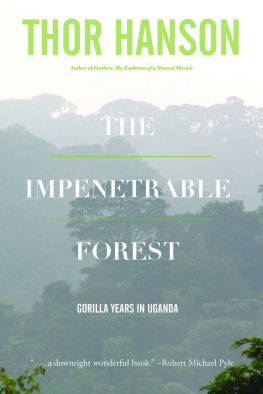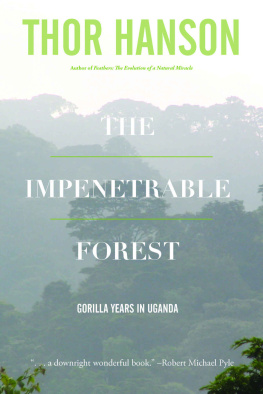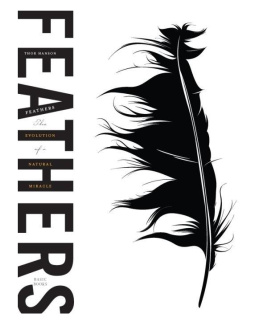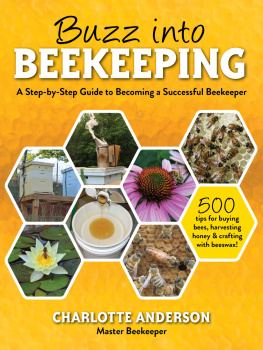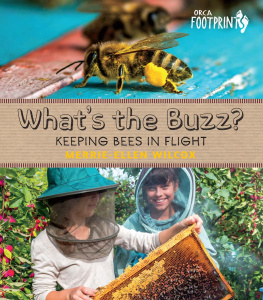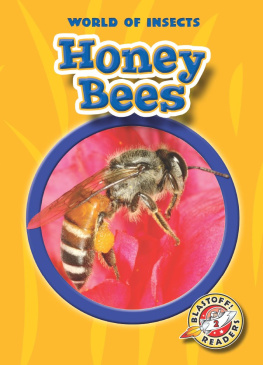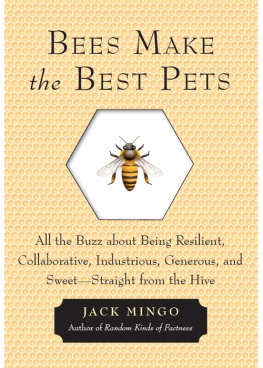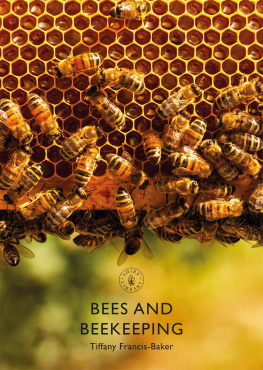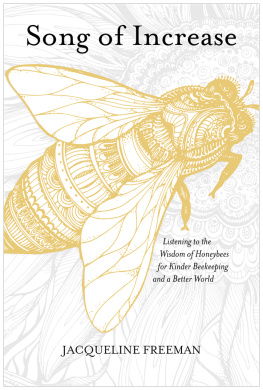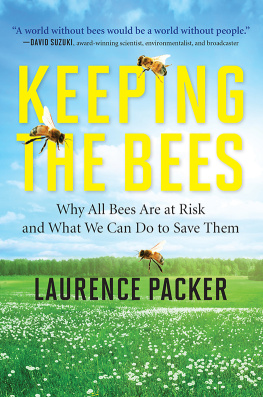A lthough honeybees make many appearances in these pages, I want to state right up front that this book is not specifically about them. There will be no detailed descriptions of the waggle dance, swarming, or their many other unique and fascinating behaviors for the simple reason that those topics have been well covered elsewhere. Writers dating back as far as Virgil, and including at least two Nobel Prize winners, have produced hundreds of excellent volumes focused entirely on honeybees. This book, in contrast, celebrates bees in general, from leafcutters and bumbles to masons, miners, diggers, carpenters, wool-carders, and more. Honeybees feature as part of that panoply, but in this story, as in nature, they must share the stage.
Also, at the risk of vexing my entomologist friends, Ive chosen to use certain words informally in this volume. Any insect might be referred to as a bug, for example, rather than just those found in the order Hemiptera. Technical terms that couldnt be avoided are included in a glossary at the end, where readers will also find an illustrated guide to bee families, a bibliography of helpful references, and a collection of chapter notes. I heartily recommend the notes. Theyre full of intriguing tidbits that fell just outside the flow of the narrativethings like nectar pirates, date honey, and how the fuzzy-horned bumblebee got its name.
W hile writing books may sound like a solitary affair, it can only happen with the help and support of many skilled people. As always, I am indebted to my fantastic agent and guide through the literary labyrinth, Laura Blake Peterson, and once again Ive had the great fortune to work with T. J. Kelleher and his crack team at Basic Books, including Carrie Napolitano, Nicole Caputo, Isabelle Bleeker, Sandra Beris, Kathy Streckfus, Isadora Johnson, Betsy DeJesu, Trish Wilkinson, and no doubt many others behind the scenes. Im grateful to all the scientists, farmers, orchardists, and other experts who shared their stories and explained their work to meany mistakes in the descriptions herein are mine and mine alone.
I would also like to thank, in no particular order, the following generous people and organizations who have boosted this project along in various ways, with apologies to anyone inadvertently forgotten: Michael Engel, Robbin Thorp, Brian Griffin, Gretchen LeBuhn, Jerry Rasmussen, Jerry Rozen, Rigoberto Vargas, Laurence Packer, Sam Droege, Steve Buchmann, David Roubik, Connor Ginley, Butch Norden, Beth Norden, John Thompson, Sen Brady, Carla Dove, William Sutherland, Sophie Rouys, Patrick Kirby, Gnter Gerlach, Gabriel Bernadello, Anne Bruce, Sue Tank, Graham Stone, Brian Brown, Alyssa Crittenden, Gaynor Hannan, George Ball, Mike Foxon, the Lyminge Historical Society, Martin Grimm, Robert Kajobe, Derek Keats, Jamie Strange, Diana Cox-Foster, Scott Hoffman Black, Ann Potter, the San Juan Preservation Trust, Dean Dougherty, Rob Roy McGregor, Larry Brewer, Uma Partap, Eric Lee-Mder, Matthew Shepherd, Mace Vaughan, the San Juan Island Library, Heidi Lewis, the University of Idaho Library, Tim Wagoner, Mark Wagoner, Sharla Wagoner, Dave Goulson, Phil Green, Chris Looney, Jim Cane, Cameron Newell, Kitty Bolte, the Xerces Society, Bradley Baugher, Baugher Ranch Organics, Jonathan Koch, Steve Alboucq, and Chris Shields.
Finally, I am ever thankful for the unwavering support and patience of my wife, my son, my extended family, and a wonderful community of friends.
Full merrily the humble-bee doth sing,
Till he hath lost his honey and his sting.
William Shakespeare
Troilus and Cressida (c. 1602)
T he crossbow fired with a dull thwack and we watched its bolt disappear upward into the leaves and branches, trailing a length of monofilament fishing line that glinted in the scattered beams of sunlight. My field assistant looked up from the bows sight and nodded in satisfaction, feeding out more line from a spinning reel duct-taped to the front grip. For him, this was all in a days work, the standard procedure for helping biologists position ropes and research equipment high up in Costa Ricas rainforest canopy. For me, it marked a turning point. Within minutes, a colleague and I had hoisted our insect trap into position, and for the first time in my career, I was officially studying bees. Or at least trying to.
The project didnt exactly go as planned. Days of shooting arrows at trees and hauling up various contraptions produced only a handful of specimens, mostly from one exciting moment when a dangling trap knocked into a nest and the whole hive attacked. The situation was infuriatingnot only for all the wasted time and effort, but because I knew the bees were up there. I could see them clearly in the reams of genetic data Id collected on the very trees where we were setting our traps. By comparing DNA from the adult trees to that of their seeds, I knew that pollen was moving around all over the placenot just among neighboring individuals, but between trees nearly a mile and a half (2.3 kilometers) apart. And because those trees belonged to the pea family, I knew that their clusters of purple flowers were designed for bee pollination, just like the vetches, clovers, sweet peas, and other common varieties back home in Washington State. In the end, I had to admit defeat, but the experience sparked a fascination that wouldnt rest. I immediately sought out courses on the taxonomy and behavior of bees, and Ive looked for ways to chase after themin my work and in daily lifeever since. Sometimes, I even catch a few.


